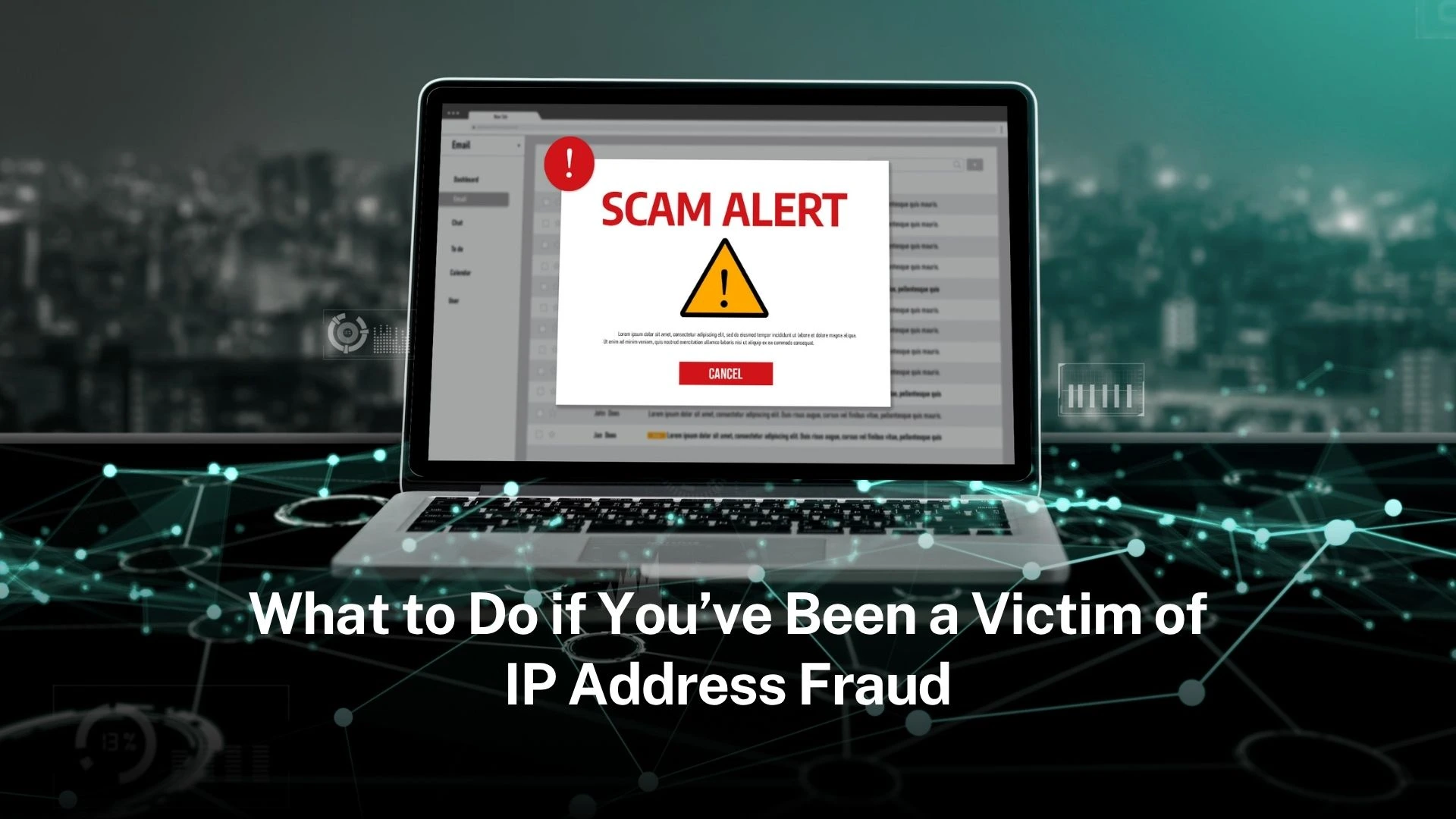Businesses facing IP address fraud need clear action plans. These plans should cover reporting procedures and recovery methods. Expert guidance provides valuable assistance. Resources like NRS help protect digital assets
Table of Contents
Toggle
-Take immediate action by isolating affected systems. Report incidents to authorities quickly. These steps limit damage from IP hijacking or abuse.
-Use available tools and organizations. NRS offers reputation cleaning services. Prevention measures restore network integrity effectively.
Understanding IP address fraud and its impacts
IP address fraud includes various malicious activities. Cybercriminals misuse or illegally obtain IP addresses. Organizations experience serious operational disruptions. Common types include IP spoofing. Attackers forge IP headers in spoofing. They impersonate legitimate sources. Hijacking involves unauthorized traffic redirection. BGP manipulation enables this. Abuse cases involve stolen blocks. Spam campaigns use these blocks. Phishing attacks also utilize them.
The IPv4 scarcity era increases problems. Fraudulent leasing activities grow. False pretenses secure addresses. Scammers resell tainted blocks. Black markets facilitate these transactions.
Kaspersky explains IP spoofing concepts. It enables unauthorized access through origin disguise. IPXO defines abuse as harmful misuse. Networks become compromised through such activities.
Impacts prove particularly severe. Blacklisting stops email deliverability. Industry data shows 90% reduction possible. Hijacking exposes sensitive data. Ponemon reports indicate significant costs. Downtime expenses reach £20,000 hourly.
Businesses face serious consequences. E-commerce companies experience problems. Cloud service providers encounter difficulties. Trust erosion occurs consistently. Revenue losses accumulate. Global cyber fraud reached £5.5 trillion in 2023.
Leasing contexts show specific vulnerabilities. Fraudsters exploit verification weaknesses. ARIN cases demonstrate this pattern. Shelf companies falsified applications. Over 735,000 IPs were involved. Organizations unaware face liability risks. Vulnerabilities amplify in current ecosystems. IPv4 trades at £35-£45 per address.
Recognizing signs of IP address fraud
Early detection remains critically important. Damage mitigation depends on timely response. Common indicators show specific patterns. Unexplained traffic rerouting represents one sign. Traceroute anomalies reveal unexpected paths. Sudden blacklisting occurs frequently. Services like Spamhaus trigger blocks. Outbound communications become affected.
Abuse reports show noticeable spikes. Recipients flag phishing activities. These appear to originate from your domains. Abusix explains suspicious classifications. Ties to malicious behaviors create listings. ServerMania highlights scanning activities. Open port checks serve as precursors.
Businesses should monitor BGP announcements. Tools like BGPStream provide assistance. RIPE NCC offers monitoring capabilities. Unauthorized prefixes become detectable.
Unusual latency patterns emerge. Packet dropping occurs unexpectedly. Geolocation mismatches raise concerns. Traffic routes through high-risk regions. These signals indicate potential hijacks.
Fraud scenarios show distinct characteristics. The 2019 Micfo scam demonstrated this. Krebs on Security exposed the operation. Victims noticed problems only later. Resale attempts revealed the issues. Regular audits identify red flags. Prevention of escalation becomes possible.
Immediate actions: Securing your network
Suspicion should trigger immediate response. Isolate affected systems first. Threat containment requires this step. Power cycle your router next. Request new dynamic IP from ISP. Static fraud attempts become disrupted. Aura provides this advice specifically.
Update firmware regularly. Enable firewalls properly. Vulnerabilities become patched through these actions. Spoofing exploits become prevented.
Hijacking situations require specific responses. Withdraw rogue BGP announcements directly. This applies when managing sessions. NRS guidance covers these procedures.
Conduct comprehensive network scans. Tools like Wireshark help significantly. Anomalous traffic patterns become identifiable.
Notify internal teams promptly. Suspend IP-reliant services immediately. APIs require temporary suspension. Email servers need similar treatment. Exposure minimization results from these steps.
Spamhaus recommends specific procedures. Trace hijacking ASN through WHOIS. Contact upstream ISP directly. Cease unauthorized announcements. These actions restore routing quickly. Data exfiltration becomes prevented.
Reporting IP address fraud: Who to contact
Prompt reporting improves recovery chances. Broader enforcement efforts benefit simultaneously. United States victims should file reports. FBI’s Internet Crime Complaint Center handles these. Detail timestamps completely. List affected IPs specifically. Include evidence like system logs.
UK victims have different channels. Action Fraud serves as reporting point. National Cyber Security Centre provides additional support.
IP-specific issues require specialized handling. Regional Internet Registries manage these aspects. ARIN covers North American cases. Reclamation procedures address tampered registrations. RIPE NCC provides abuse contacts. Coordination occurs through proper channels.
Department of Justice handles federal probes. Computer Crime Section manages these cases. Hacking incidents fall under their jurisdiction. Fraud cases receive appropriate attention.
Evidence collection remains essential. Screenshots of blacklists help. Traceroute results provide valuable data. Payment details become relevant for leasing cases.
FTC offers specific guidance. Relay fraud variants require particular approaches. Chain-of-custody preservation matters greatly. Investigations depend on proper documentation.
Cleaning your IP reputation post-fraud
Tainted reputations cause persistent problems. Diligent remediation becomes necessary. Check listings on multiple services. Spamhaus Block List requires monitoring. SURBL listings need similar attention. Submit delisting requests properly. Include proof of remediation actions. Cleaned configurations demonstrate improvement.
Reputation tools provide assessment capabilities. Talos Intelligence offers scoring services. Low ratings create service limitations. Leased IPs require special handling. Reputable providers facilitate block swaps. NRS vets such providers effectively.
Implementation of sender policies helps. SPF records require proper configuration. DKIM signatures improve trust rebuilding.
NordVPN suggests ongoing monitoring. Prevention of re-listing becomes possible. Recovery timelines show variation. Minor abuses resolve within days. Hijacking cases require weeks typically. Proactive delistings restore most functionality. Eighty percent improvement occurs swiftly.
Leveraging NRS for IP fraud recovery and prevention
Number Resource Society empowers organizations. Secure IP ownership receives focus. Fraud recovery benefits significantly from their resources. Their guides cover important topics. IP Address Management Best Practice provides valuable advice. Detailed documentation helps reclaim hijacked assets.
NRS initiatives promote fair leasing practices. Fraud risks reduce in emerging markets. Ownership awareness increases through their work. Victims receive specific recommendations. RPKI implementation validates prefixes properly. Invalid announcements become blocked effectively.
Their hijacking prevention page outlines procedures. Peer notifications require proper execution. Audit processes streamline recovery efforts.
Non-profit status ensures objective guidance. Community vigilance receives encouragement. EIN Presswire reports confirm their mission. Equitable governance remains their focus.
NRS tool integration reduces re-victimization. Traceability enhancement results from their methods.
Long-term prevention strategies against IP fraud
Post-incident periods require defense strengthening. RPKI adoption provides cryptographic validation. RIPE studies show significant improvement. Ninety-five percent of rogue announcements become filtered. Selective peering with trusted ISPs helps. Route filters enforcement matters greatly.
NRS stresses lookup importance. Cybersecurity benefits from proper verification. Fraudulent origins become identifiable through these methods. Staff training addresses recognition skills. Phishing attempts become detectable. Social engineering enables forty percent of hijacks. Prevention becomes possible through education.
IP pool diversification helps significantly. Reputable brokers provide leasing options. Single-point failures become less likely. Blockchain technology enables provenance tracking. NRS campaigns pilot these solutions. Immutable transfers ensure security. Annual audits maintain proper vigilance. Tools like BGPMon support these efforts. Vulnerability transformation into resilience occurs gradually.
Expert perspectives: Insights on recovery
Authorities emphasize rapid response importance. Stephen Ryan worked on Micfo fraud case. He described elaborate operation characteristics. Multiple state law violations occurred. Vigilance remains essential according to him. Address fraud schemes require aggressive response. Litigation resources exist for egregious cases.
John Levine provides ICANN advisory services. He notes historical verification weaknesses. ARIN improved their processes recently. Valuable IPv4 space increases incentives. Criminal activities become more likely accordingly. Vigilance requirements increase correspondingly.
Dan Kaminsky offers security researcher perspective. All systems remain potentially vulnerable. This reality requires acknowledgment. Reporting and prevention assume primary importance.
Case studies: Lessons from real IP fraud incidents
The 2019 Micfo scandal demonstrates leasing fraud. Scammers accumulated IPs extensively. False entities facilitated this process. Resale value reached £6 million eventually. ARIN revocation occurred finally. Victim recovery involved arbitration procedures. Reputation damage occurred during delays.
2022 witnessed European firm hijacking. Their /16 block became compromised. Traffic redirection enabled phishing activities. Global blacklisting resulted initially. Swift ISP alerts triggered responses. RPKI implementation restored routing. Spamhaus documentation covers this case. Resolution required several hours.
UK’s NCSC handled spoofing ring case. Computer Misuse Act enabled prosecutions. Perpetrators received appropriate fines. These cases highlight important lessons. Early detection prevents significant losses. Monitoring systems provide crucial benefits. NRS-like advocacy ensures fair outcomes.
The role of technology in IP fraud mitigation
AI-driven tools transform detection capabilities. Pattern analysis platforms identify anomalies. Pre-hijack flagging becomes possible.
IP2Location tracks fraudulent trends effectively. Blockchain technology verifies transfers securely.
NRS integrates technological solutions. Ownership campaigns utilize these tools. DNSSEC implementation prevents tampering. Future adoption rates will increase significantly. Seventy percent of firms will use automated validation. Forecasts indicate incident reduction accordingly.
Frequently asked questions
1. What is IP address fraud?
It involves unauthorized IP block misuse. Spoofing represents one method. Hijacking utilizes BGP manipulation. Abuse enables malicious activities. Leasing contexts show particular vulnerability.
2. How do I know if my IP has been compromised?
Watch for specific indicators. Rerouting patterns suggest problems. Blacklisting occurrences signal issues. Traffic anomalies require investigation. BGPStream checks BGP sessions effectively.
3. Who should I report IP fraud to?
Multiple entities handle different aspects. IC3 covers cyber crime elements. RIRs manage allocation problems. Local authorities address legal dimensions. Action Fraud serves UK victims specifically.
4. Can I recover a hijacked IP block?
Recovery remains definitely possible. ISP notifications initiate the process. BGP withdrawals restore control. RIR reclamations complete the procedure. Timelines range from hours to weeks typically.
5. How does NRS help with IP fraud prevention?
NRS provides comprehensive resources. Detection guides offer practical advice. RPKI implementation receives emphasis. Ownership protection remains their focus. Fair leasing practices receive promotion through their work.




